Valgus deformation of the foot thumb is the most common orthopedic disease.Its main feature is the curvature of 1 Plusnephalanx joint.In the early stages, it manifests itself in the form of a small growth near the thumb.The pathology has slow development, so it is quite difficult to diagnose in the early stages.Valgus deformation is often combined with a violation of blood supply to tissues, which leads to the development of arthritis or arthrosis.In the absence of treatment in the thumb joint, an acute inflammatory process occurs called burrose.
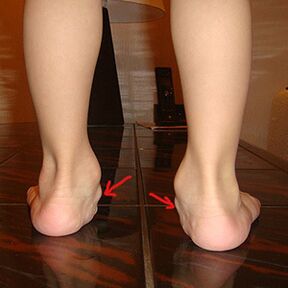
What contributes to finger curvature?
The causes of Valgus deformation may be different, the main ones are considered:
- Smooth feet;
- Congenital pathologies of the Plusnoplange Articulation;
- Muscle weakness, leading to pathological mobility of bone surfaces;
- Foot injuries;
- The destruction of the cartilage against the arthritis or arthrosis fund.
Wearing uncomfortable shoes to direct reasons to the occurrence of the disease does not apply, but can accelerate the development of the pathological process.Therefore, Khalus Valgus is more often found in women.There are other pathological reasons why the first finger can double.Osteoporosis develops when calcium leaching of bone tissues, due to which they become less dense.This is what leads to a change in the shape of the joint.Almost all people who have symptoms of deformation of Valgus have one of 2 types of flat feet.Endocrine disorders contribute to a decrease in the strength of ligaments, which is why they cannot keep the joint in the correct position.The risk group includes women who are used to walking in high shoes.The supply of finger increases in the fingers accelerates the process of curvature of the joint.Ballet dancers are forced to stay in the socks for a long time, which can lead to the deformation of the feet.Therefore, Valgus deformation is found in only 3% of people under 30, while among the elderly every 5 people have a similar problem.This disease is most often found in patients whose parents had pathologies of the musculoskeletal system.
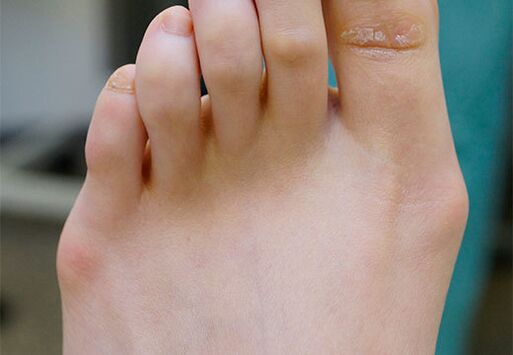
CLINICAL IMAGE OF THE DISEASE
The curvature of the leg thumb in the early stages is quite difficult to notice.One person realizes that he is uncomfortable to walk in the usual shoes.After a long standing stay, pain syndrome occurs.Over time, the main sign of pathology appears - the deviation of the first metatarsophalangic joint towards the second with the formation of the call cone.The rest of the fingers takes the shape of hammering.The patient may suffer chronic fatigue and difficulties in selecting shoes.Over time, corns appear on the skin of their feet, bringing many inconveniences to a person.The most common signs of valgous deformation are painful sensations associated with inflammation of the synovial membrane.A soft seal appears on the first finger.The skin of the affected area and wave.Over time, bone corn is formed, soft annoying and cartilage.Severe pains appear as they walk.Articulation mobility is limited, the pathological process can cover all fingers of the foot.
Various degrees of deformation of Valgus are distinguished, each of which has its own symptoms:
- The 1st degree Vallux Valgus is characterized by the curvature of the finger no more than 20 °.There is no pain at the same time.
- In the case of 2 degrees disease, the joint is displaced at 21-30 °.Unpleasant sensations are light in nature, finger mobility is not disturbed.
- With the third degree valgus deformation, the curvature angle exceeds 30 °.The pain in the affected area has acquired a constant character.They prevent a person from wearing family shoes, walking and practicing sports.
- In 4 stages of the disease, the joint is displaced by more than 50 °.The deformation of this degree is characterized by severe pain, difficulties with the choice of shoes, the formation of a corn.
How this disease is revealed
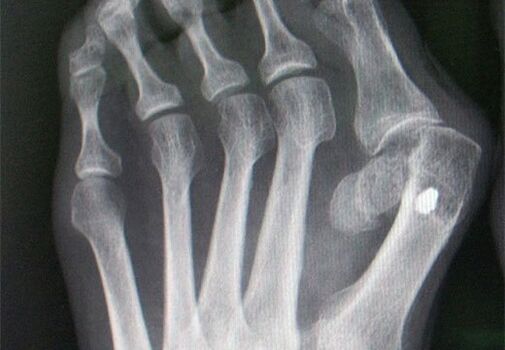
To make a preliminary diagnosis, an examination of the foot and an anamnesis history are performed.The doctor should:
- Evaluate the severity of march change;
- The degree of curvature of the joint;
- the presence of grains;
- Bone cones.
The main therapeutic measures
The choice of a specific methodology depends on the degree of joint deformation and the severity of pain syndrome.The most effective treatment of the deformation of Valgus from the foot thumb is in its early stages.Therapy can be conservative and surgical.In addition, the development of orthopedic shoes, which contributes to the correct distribution of the load and prevents the appearance of corns,Helps suspend the development of the pathological process.To reduce pressure in the affected area, specialty and joints.Due to the large number of side effects, these funds are not suitable for prolonged use.Drug therapy cannot completely save a person from Valgus deformation.With your help, you can only eliminate pain and signs of inflammation.For the treatment of the disease, physiotherapeutic procedures - diathermia or ultrasound are often used.However, these methods also bring only temporary relief.The most effective is the use of orthopedic devices that are taken into account the individual characteristics of the foot.The use of supporters and fingers in the early stages of the disease prevents even more joint deformation.With advanced forms of the disease, orthopedic devices allow you to make the walk more comfortable.With the help of special insoles, you can eliminate the main cause of curvature - flat feet.The operation is usually required for 3-4 degrees of deformation of valgus, when conservative treatment is ineffective.The choice of method depends on the degree of severity of deformation.With a slight displacement of the finger, only bone growth is removed.To do this, a small incision is made in the affected area, after which the swelling is cut and removed.
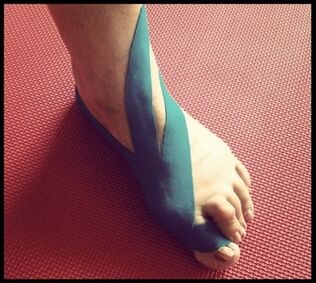
Distal osteotomy aims to reduce the angle of curvature.The bottom of the bone is dissected and installed in the correct position.Proximal osteotomy implies the effect on the upper part of the finger.During Keller's operation - Brandes, the thumb joint is completely removed, the remaining synovial shell is placed between the positive bone and the main phalanx.Surgical interventions are used in most cases of advanced forms of valgus deformation.The effectiveness of treatment depends widely on the correction of the implementation of rehabilitation measures.In the post -operative period, it is necessary to wear firm shoes or use special devices.To reduce the load in the operated leg, you need to use crutches.The shoes must have a wide thumb and low heels.It should be remembered that any surgical intervention can lead to the development of complications.
The most dangerous are:
- soft tissue infection;
- osteomyelitis;
- bleeding;
- displacement of bone fragments;
- slowing of healing processes;
- Loss of finger sensitivity.
Rarer complications are avascular neurosis and post -traumatic arthritis.Valgus deformation prevention is a constant visit to an orthopedist.Wear high heels shoes should be refused.The use of orthopedic insoles is recommended.A long stay in position is prohibited.Valgus deformation is a very serious disease that can worsen the patient's quality of life, so treatment should begin at their early stages.
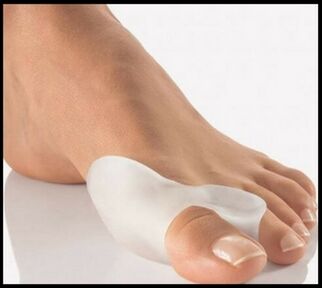
Treatment of Khalus Valgus (Hallux Valgus) without surgery
Excessive body weight using uncomfortable shoes, foot trauma leads to appearance from inside at the base of the painful and hyperemic protrusion thumb.It is called - Halux Valgus.What is Hallux Valgus?The literally deciphered term as follows: Hallux is a thumb and valgus is curvature.The protrusion formed is the medial part of the head of the first metatarsal bone.At the same time, it gradually moves away from other metatarsal bones, which visually increases size bulging.This disease manifests itself by intense pain, it is impossible to wear ordinary shoes.The skin above the protrusion is constantly rubbed, inflamed, in rare cases that bleed.With premature circulation of medical aid, a significant deformation of all metatarsophalangic joints occurs.The first and second finger is crossed, other fingers can double involuntarily, while the extension becomes impossible.
Causes of the disease
To better understand what Khalus Valgus is, you need to know the causes and mechanism of this disease.It develops more often in women, as its ligament apparatus is not as strong as in men.This deformation does not develop independently, the effect of the following pathogenic factors is necessary for manifestation:
- Higher body weight - In fat people, there is an increase in load in the joint area of more, which leads to the stretching of the ligament apparatus, which connects the metatarsal bones;
- Narrow, uncomfortable, pressing in high heels, shoes are the main trigger of this state.The frequent use of shoes with a narrow foot finger, also in high heels, contributes to a constant change in the physiological position of the thumb, which is why it gradually deflects;
- Changes in the hormonal background, which usually occurs in fair sex, contribute to a change in metabolism and tropism of connective tissue, which leads to the increase in tendon stretching, impaired their integrity;
- Traumatization - Significant damage to muscles tendons that perform the main and diverted functions causes the predominance of the efforts of one of them, which is the cause of deviation from the first metatarsal bone;
- Diabetes Mellitus - leads to the development of diabetic foot, which is characterized by impaired blood circulation and tropism of muscles, tendons and ligaments, which makes it possible to manifest with deformations;
- Arthritis and arthrosis of the leg thumb can lead to the development of a chronic inflammatory focus, these diseases also stimulate the growth process of osteophytes that can cause deformation of the affected joint;
- Pregnancy is a period in a woman's life, when complete hormonal restructuring occurs and an increase in the abdomen transfers the load to the front parts of the feet, which causes the development of Khalus Valgus.
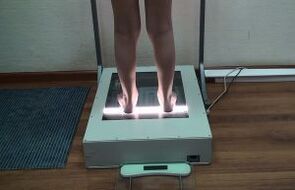
Hallux Valgus stages
Khalus Valgus's degree of gravity is determined based on the angle between the first metatarsal bone and the second, as well as the diverting angle of the thumb of the first metatarsal bone.There are three stages of development of this disease:
- Valune Valgus of the 1st degree is characterized by minimum deviations that compose: the inter -unit angle of less than 12 degrees and the diversion of the thumb does not exceed 25 degrees.At the same time, patients may not be completely absent in pathognomonic symptoms, and visual changes are almost invisible.
- Khalus Valgus 2 degrees - manifests by an increase in inter -gender singing to 18 degrees, at this time the first finger is rejected more than 25 degrees.With this deformation development, painful sensations appear, discomfort when wearing ordinary shoes.With excessive physical overload, the pain intensifies.The convex part of the positive bone head is constantly rubbed, hyperemic and swollen, which indicates an inflammatory process.
- Hallux Valgus 3 degrees is manifested by significant curvature, the angle between metatarsal bones exceeds 18 degrees and the first and second finger are crossed.A significant red -colored protuberance is observed inside, painful in palpation.Wearing shoes becomes impossible due to pain, constantly solved patients, sparing the affected limb.
Treatments of treatment depend on the neglect of the pathological process.In the early stages, you can do with conservative methods using tires and other fixing devices.The next stage requires urgent surgery, without which foot can deform, other undesirable complications will occur.
Halo Valgus treatment methods
Before starting treatment, it is necessary to exclude the impact of pathological factors.First of all, you need to reduce body weight.For this, it is recommended that patients practice sports, bring an active lifestyle.An important point is that when performing physical exertion, it is forbidden to apply forces to the affected limb.Dietary therapy appointment is an important step in the treatment of Khalus Valgus.An expert may recommend an effective diet, but must necessarily include products rich in vitamins and minerals that will help improve the condition of the affected joint.
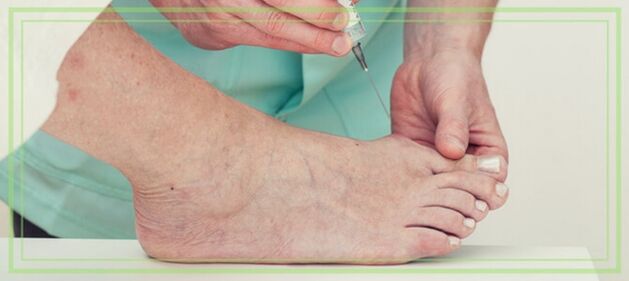
Orthopedic tires and fixers
They are used for constant deformed bone fixation and finger closer to the rest of the foot.You can use rigid blocks - tires that, when fixed on the foot, do not allow to move a finger.This device is used during sleep as well as with a long rest.You can use the use of silicone fasteners.There are silicone fasteners that are attached only to the thumb, as well as cling to all fingers.The main advantage of this development is the ability to walk in the shoes.At the same time, the effective fixation of the positive bone continues, and the lock itself is not practically felt when using.























